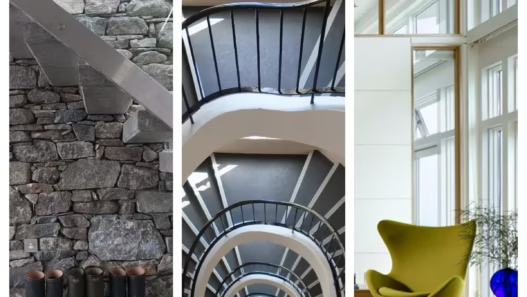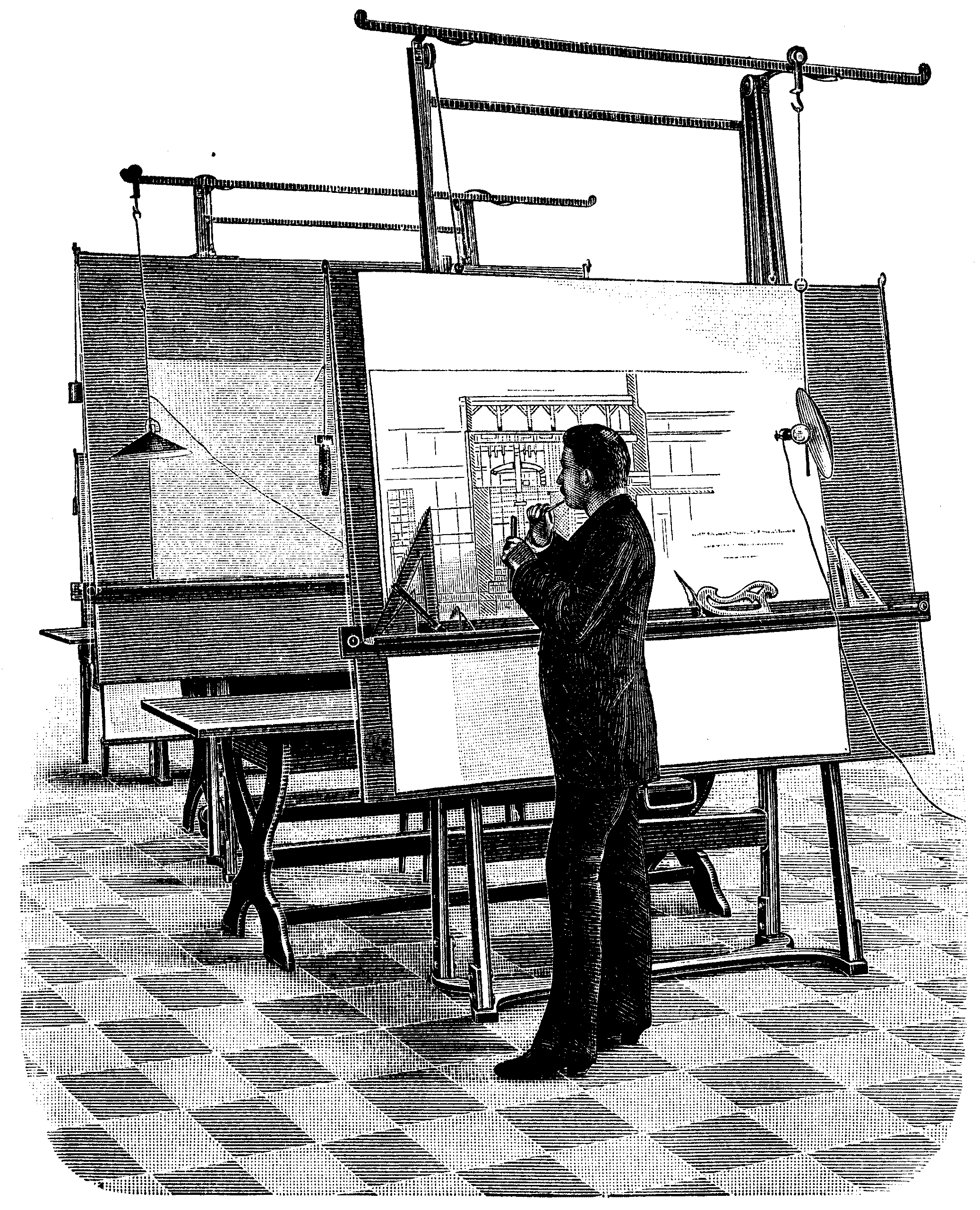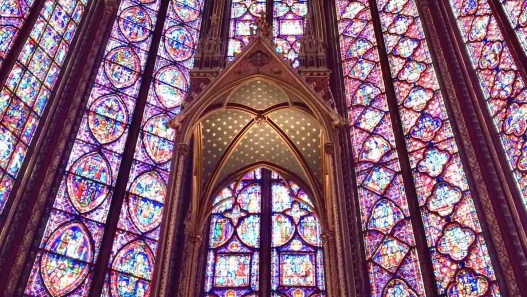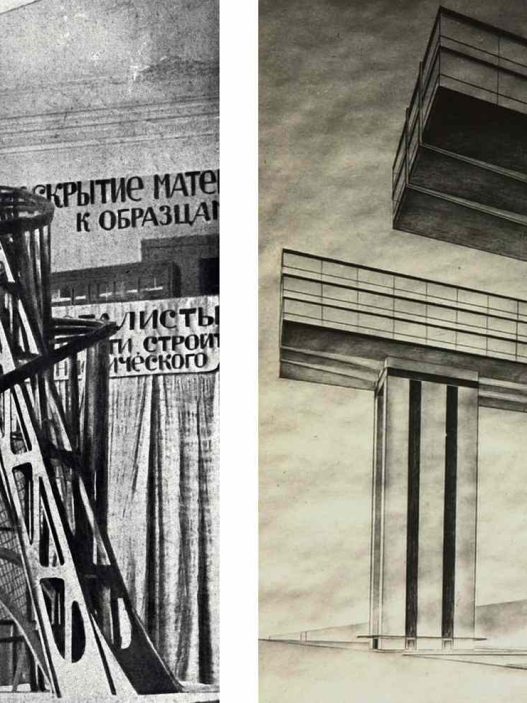Gothic cathedrals are among the most breathtaking and iconic structures in architectural history. Originating in the 12th century and flourishing until the 16th century, these grand cathedrals were built throughout Europe during the Middle Ages. They served not only as places of worship, but also as symbols of society’s faith and artistic expression. Their soaring spires, intricate details, and vibrant stained glass windows inspire awe and curiosity, making them fascinating subjects of study for historians, architects, and visitors.
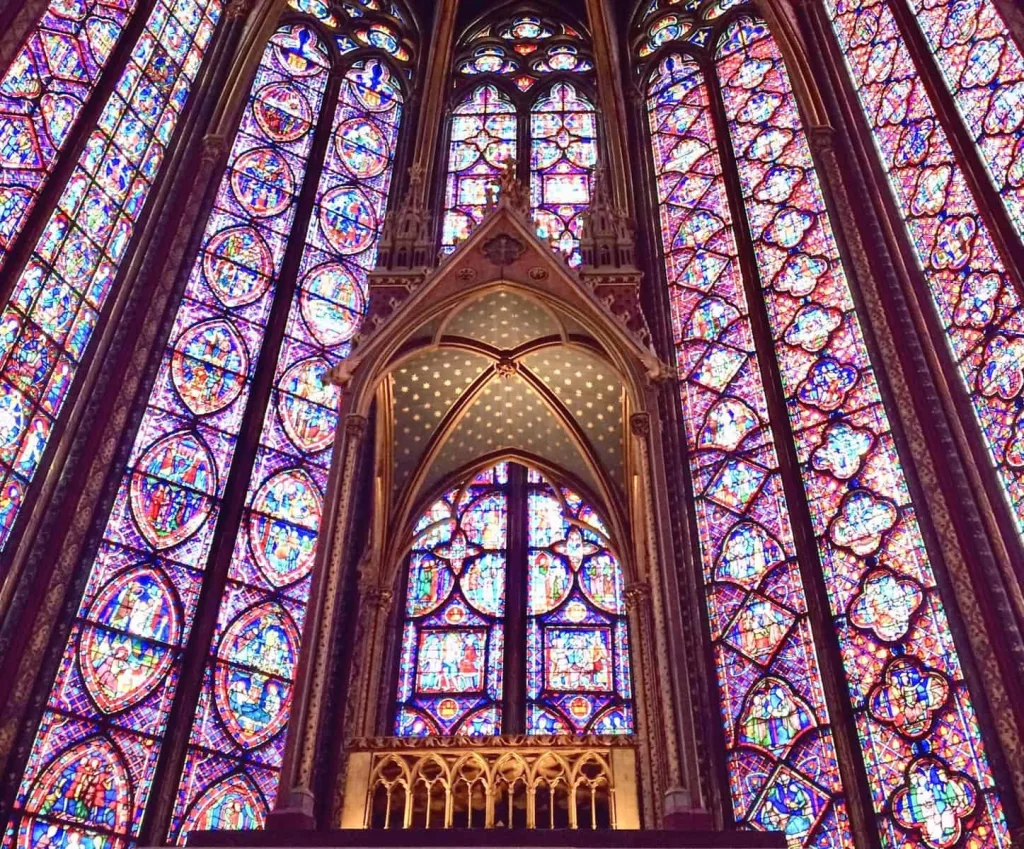
Historical Context
To fully understand Gothic cathedrals, we must first explore the historical context in which they were created. The Gothic style emerged during a period of significant change in Europe marked by the rise of cities, increased trade, and a growing sense of nationalism. The church played a central role in this transformation, and cathedrals became a focal point for both spiritual and civic life. The first Gothic cathedral, the Basilica of Saint Denis near Paris, set a precedent that would influence countless others. As communities sought to express their allegiances and ambitions, cathedrals came to dominate city skylines, reflecting both local pride and the power of the Church.
Architectural Features
Gothic architecture is defined by a number of notable features that set it apart from earlier styles. One of the most notable elements is the use of pointed arches, which allowed for higher ceilings and larger interior spaces. This innovation was complemented by ribbed vaults and flying buttresses, which distributed weight more effectively and allowed for thinner walls. As a result, these walls could be decorated with striking stained glass windows that bathed the interiors in colored light. The intricate facades, with their elaborate carvings and sculptures, often depicted stories from the Bible and served as a visual narrative for the largely illiterate population of the period. Each cathedral is a testament to the ingenuity of its builders, displaying both artistic talent and engineering prowess.
The Importance of Stained Glass
Stained glass is perhaps one of the most fascinating features of Gothic cathedrals. These windows are not just decorative; they play a vital role in conveying religious messages and enhancing the spiritual atmosphere within the cathedral. The vibrant colors and intricate designs tell stories from the Bible, depicting saints, angels, and significant events. As sunlight filters through these windows, it transforms the interior, creating a mystical atmosphere that draws worshippers into a deeper state of contemplation. The craftsmanship involved in creating these windows was immense, often requiring years of work by skilled craftsmen. The legacy of stained glass continues today as modern artists draw inspiration from these historic masterpieces.
Symbolism in Gothic Architecture
Gothic architecture is rich in symbolism, reflecting the religious fervor and philosophical ideas of the period. The verticality of the structures symbolizes the connection between heaven and earth, embodying humanity's desire to reach the divine. The light filtering through stained glass is often interpreted as a representation of God's presence illuminating the sacred space. Additionally, the use of certain motifs, such as the fleur-de-lis, often associated with purity and the Virgin Mary, emphasizes specific theological themes. The layout of a cathedral, typically cruciform, serves to reinforce its sacred purpose and guide the faithful in their worship and contemplation.
Lead Usage Overview
Lead plays a crucial role in the construction and art of Gothic cathedrals, particularly in the context of stained glass windows. It is used to create the framework that holds the individual pieces of glass together, allowing for the intricate designs that characterize these windows. The application of lead glass dates back centuries and requires a delicate touch, as craftsmen must carefully shape the lead to fit perfectly around each piece of glass. Beyond its practical use, lead also symbolizes strength and durability, allowing these magnificent windows to stand the test of time. The mastery of lead reflects the dedication and skill of those who built these cathedrals, combining functionality and artistry in a way that still captivates viewers today.
As we explore Gothic cathedrals, we uncover layers of history, art and spirituality that echo through time and invite us to appreciate the depth and beauty of these architectural wonders.
Stained Glass Composition
Stained glass is a fascinating blend of art and craftsmanship that has graced churches, cathedrals and homes for centuries. The sparkling beauty of stained glass windows is not only a feast for the eyes; it also tells stories, conveys emotion and transforms light into a vibrant spectrum of colour. To fully appreciate this art form, it is essential to explore the materials, techniques and processes used to create stained glass.
Materials Used
The foundation of stained glass lies in its materials. The primary ingredient is silica, an important ingredient in glassmaking. Silica is obtained from sand and processed at high temperatures to create a malleable material that can be shaped and colored. In addition to silica, other ingredients such as soda and lime are added to lower the melting point and increase the strength of the glass.
Colour is very important in stained glass and is achieved by combining metal oxides. For example, cobalt oxide creates deep blues, while copper oxide produces rich greens. These oxides are mixed with molten glass to create vibrant hues that retain their brilliance even in sunlight. Other additives such as manganese can be used to produce purples, while iron can give amber and brown tones. It is the careful selection and combination of these materials that gives stained glass its unique character.
Coloring Techniques
Creating color in stained glass is a complex process that goes beyond simply adding metal oxides. One popular technique is called "flash glazing," where a thin layer of colored glass is fused onto a sheet of clear glass. This allows for nuanced effects where the artist can etch or etch the top layer to reveal the clear glass underneath, adding depth and texture to the design.
Another method is "painting" on glass. Artists use special glass paints made from metal oxides mixed with a medium to create images or patterns directly on the glass surface. After painting, the glass is baked in a kiln to harden the paint and make it an integral part of the glass. This technique allows for incredible detail and the ability to create intricate scenes, making stained glass a narrative art form.
Glass Making Process
The stained glass making process is both an art and a science. It begins with the raw materials being melted in a furnace where silica, soda and lime are heated to around 1,000 degrees Celsius. Once melted, the glass can be shaped and colored before being blown, rolled or poured into molds.
Once cooled, the glass is cut into specific shapes using diamond-tipped tools. Each piece is then assembled into a design, often based on intricate sketches created by the artist. The pieces are held together using thin strips of lead attached to the edges of the glass. This not only provides structure, but also allows for flexibility in design, allowing for complex patterns to be created.
The Role of Lead in Structure
Lead plays a crucial role in the structural integrity of stained glass. Using lead glass, a U-shaped channel, allows artists to fit the glass pieces together securely. This frame supports the weight of the glass and helps maintain the balance of the overall design.
Lead is also a versatile material that can be easily molded into a variety of shapes, allowing for creative freedom in the design process. However, over time, lead can deteriorate due to environmental factors and requires careful maintenance and restoration. Some contemporary artists are exploring alternatives to lead, such as copper foil, which offers a different aesthetic and may be more suitable for complex designs.
Comparison with Other Materials
While stained glass is unique in its ability to blend light and color, it is comparable to other artistic media such as acrylic or canvas. Unlike acrylic, which can mimic the appearance of glass but lacks its historical and cultural significance, stained glass has a tactile quality and irreplaceable brilliance. The interaction of light passing through stained glass creates a dynamic experience that changes depending on the time of day and the viewer's location.
While canvas painting also offers depth and color, it does not have the same architectural integrity as stained glass. Stained glass is often incorporated into the fabric of buildings, enhancing not only the aesthetics of a space but also its spiritual and emotional atmosphere. This immersive quality that sets stained glass apart from others makes it a valuable art form that continues to evolve while honoring its rich heritage.
As we explore stained glass composition, we uncover a world where art meets craftsmanship, where each piece is a testament to the skill and creativity of its maker. Whether in a grand cathedral or a small home, stained glass remains a symbol of beauty and inspiration, illuminating our surroundings with its colorful radiance.
3. Historical Development of Lead Use
The historical development of lead use in architecture is a fascinating journey through the intertwining of art, craft, and technological innovation. Lead has played a particularly important role in the creation of stained glass windows, which not only illuminate spaces but also tell stories and embody spiritual significance. Understanding how lead has been used over time reveals much about cultural changes, artistic movements, and the evolution of architectural practices.
Origins of Stained Glass
The origins of stained glass can be traced back to ancient civilizations, where colored glass was used in a variety of decorative ways. However, it was not until the early Middle Ages, particularly in the 12th century, that stained glass windows began to appear as prominent features in cathedrals and churches. Initially, these windows served practical purposes, such as providing light while protecting the interior from the elements.
The use of lead in stained glass was revolutionary. Craftsmen discovered that lead could be shaped into ribbons, allowing small pieces of colored glass to be joined together into intricate designs. This method not only increased the aesthetic appeal of windows, but also provided structural integrity. The vibrant colors and storytelling abilities of stained glass became a defining feature of Gothic architecture, transforming ordinary light into a means of religious expression.
Evolution of Techniques
As stained glass grew in popularity, the techniques for creating these masterpieces evolved. Early artisans relied on simple methods, using natural pigments to color the glass and lead to hold the pieces together. Over time, techniques became more sophisticated. The introduction of glass painting allowed for greater detail and expression in design, allowing artisans to depict intricate biblical scenes and figures of saints.
Improvements in firing techniques further increased the durability and vibrancy of stained glass. Artisans learned to fuse colored glass with metallic oxides to achieve richer tones and create gradients and shading. This evolution not only demonstrated the technical skills of the artisans, but also reflected society's changing artistic tastes, moving from the abstract to the more realistic representations that characterized the Renaissance.
Important Cathedrals and Their Windows
Throughout history, some cathedrals have become iconic for their stunning stained glass windows. One of the most famous examples is Chartres Cathedral in France, famous for its extensive collection of medieval stained glass depicting scenes from the Bible and the lives of saints. The windows at Chartres are renowned for their exceptional preservation and vibrant colours, offering a glimpse into the artistic achievements of the 12th century.
Another notable example is the Cologne Cathedral in Germany, which features a stunning array of 19th-century stained glass windows. These windows showcase the adaptability of stained glass art by combining modern techniques with traditional styles. Each cathedral tells a unique story through its windows, reflecting local culture, history, and spiritual beliefs, making them not only architectural achievements but also cultural treasures.
Technological Developments Over Time
Technological advances have significantly impacted the production and design of stained glass windows throughout history. The Industrial Revolution was a turning point; mass-production techniques made stained glass more accessible, allowing for larger and more complex windows to be created. Innovations in glass production led to a wider range of colors and textures, allowing artisans to explore new artistic possibilities.
Today, the advent of computer-aided design (CAD) has changed the way stained glass windows are conceptualized and manufactured. Artists can now create intricate designs on computers that facilitate precision and creativity. Techniques such as sandblasting and glass lamination have further expanded the horizons of stained glass art, allowing for innovative installations in modern architecture while still honoring traditional craftsmanship.
Lead Application Examples
Examining specific case studies of the application of lead to stained glass reveals both the challenges and triumphs of the craft. One notable example is the restoration of stained glass windows in Notre-Dame Cathedral after a devastating fire in 2019. The restoration process required not only skilled craftsmanship, but also a deep understanding of historical techniques and materials. The craftsmen worked meticulously to preserve the original designs while integrating modern safety standards.
Another interesting example is the use of lead in contemporary art installations, where artists such as Marc Chagall push the boundaries of stained glass art. Chagall’s work in the Metz Cathedral combines vibrant colors and abstract forms to demonstrate how lead can be used in innovative ways beyond traditional narratives. These case studies highlight the enduring importance of lead in stained glass and demonstrate its adaptability and importance in both historical and modern contexts.
The result is a rich tapestry of historical developments in the use of lead in stained glass, reflecting artistic evolution, technological advancement and cultural significance. From its origins in medieval cathedrals to contemporary applications, lead continues to be a vital tool in the architectural world, illuminating spaces and telling stories through light and colour.
4. The Craftsmanship Behind Lead Work
Leadwork is a timeless art that combines functionality with beauty, especially in the context of stained glass windows. This intricate craft has been a vital element in architectural design for centuries, capturing light and creating vivid images that tell stories or enhance spiritual experiences. The craftsmanship behind leadwork is not just about putting glass and lead together; it encompasses a rich tapestry of skills, tools, techniques, challenges, and the ongoing preservation of this unique art form.
Skills Required for Lead Glazing
The art of lead glazing requires a variety of skills that go beyond mere technical ability. At its core, artisans must have a keen eye for design and color, understanding how light interacts with the different tones and textures of the glass. This visual acuity is critical to creating pieces that are not only aesthetically pleasing but also narratively coherent.
Hand-eye coordination is vital, especially when cutting glass and assembling intricate patterns. Craftsmen must also have a working knowledge of geometry, as many designs require precise measurements to ensure the pieces fit together smoothly. Furthermore, patience and attention to detail are essential; the process can be quite slow, as each piece of glass must be meticulously cut, ground and fitted into its lead frame.
Additionally, a strong understanding of the materials used is essential. This includes knowledge of different types of glass, use of lead, soldering and weatherproofing techniques. Many artisans also find it helpful to have a background in art or design, as it helps conceptualize and execute complex work.
Tools and Equipment
Lead glazing tools are as important as the craftsman's skills. Basic equipment includes glass cutters, which allow for precise cutting of glass sheets, and pliers, which help break the glass cleanly along a scored line. A soldering iron is essential for fusing the lead together, creating a sturdy frame that holds the glass pieces in place.
Craftsmen often use a flat table for assembly to ensure their work remains flat and consistent. Safety equipment such as goggles and gloves are also vital to protect against sharp glass edges and harmful fumes from soldering. Specialized tools such as glass grinders are used to smooth edges and ensure a perfect fit, while lead knives are used to cut the lead itself.
In addition to these tools, a well-lit, uncluttered work area is also critical. Good lighting helps artisans see the colors and details of the glass, while an uncluttered space allows them to work efficiently and safely.
Lead Glass Making Techniques
Lead glassmaking is a meticulous process that involves several different techniques. The first step is selecting the appropriate glass, which can range from clear to textured and colored varieties, each bringing a unique quality to the final piece. Once the glass is selected, artisans outline the design, often using a full-size cartoon as a reference.
Cutting the glass is where the skill really shines. Each piece must be cut to fit perfectly into the lead, which acts as both a frame and structural support. The glass edges are then ground to ensure a smooth fit. Once each piece is prepared, the lead is cut into strips and shaped to form the skeleton.
Assembly involves placing the glass pieces into the lead and then soldering the joints to hold everything in place. This requires a steady hand and an understanding of how heat affects both the lead and the glass. After soldering, the piece is cleaned and usually treated with a protective coating to increase durability and maintain its appearance over time.
The final stages may include additional artistic techniques such as painting or etching onto the glass, adding layers of detail and depth to the work. The combination of these techniques not only creates stunning visual effects, but also reflects the personal touch and creativity of the craftsman.
Difficulties Faced by Tradesmen
Despite the beauty and elegance of lead work, artisans face many challenges in their craft. Chief among these challenges is the physical demands of the job. Lead glazing requires long hours of standing, precise cutting, and repetitive motions that can eventually lead to strain or injury.
Also, sourcing quality materials can be difficult. The best glass and lead are not always readily available, and fluctuations in material quality can affect the final product. Craftsmen must be adaptable, often having to adjust their designs or techniques to suit the materials at hand.
The environmental impacts of working with lead are also significant. Craftsmen must take precautions to ensure the safety of themselves and their work environment, leading to increased costs and complexity in the craft. Furthermore, the rise of digital technology and mass production poses a challenge as traditional methods may be eclipsed by faster, less labour-intensive techniques.
Finally, there is the challenge of keeping the craft alive in a rapidly changing world. As fewer craftsmen enter the field, there is a risk that valuable skills and knowledge will be lost, making the preservation of traditional techniques essential.
Protection of Craftsmanship
Preserving lead craftsmanship is vital to maintaining the heritage and cultural significance of this art form. Organizations and guilds dedicated to the craft play a crucial role in this effort by offering educational programs and workshops to train new craftsmen. These initiatives help pass on techniques and knowledge that have been developed over centuries.
Additionally, museums and historical societies often display examples of lead work to highlight its importance in architectural history and encourage public appreciation. These institutions can inspire new generations of craftsmen and enthusiasts by promoting exhibitions and educational events.
Additionally, the rise of digital technology can aid in preservation. Online platforms allow artisans to share their work, connect with others in the field, and access resources that may not be available locally. Virtual workshops and training can reach a broader audience, ensuring that knowledge of lead glazing techniques is not limited to a select few.
Ultimately, preserving craftsmanship in leadwork is about fostering a community that values tradition while embracing innovation. By nurturing the skills of new craftsmen and celebrating the beauty of leadwork, this timeless craft can continue to thrive in contemporary architecture.
5. The Aesthetic Effect of Lead in Stained Glass
Stained glass has captivated the human imagination for centuries, serving not only as a functional element in architecture but also as a canvas for artistic expression. Among the various components that contribute to its beauty, lead plays a pivotal role. This section examines how lead affects the aesthetics of stained glass, shaping our visual experience and the narratives conveyed through these colorful works of art.
Visual Effects Created by Bullet
Lead has become an important material in stained glass production because of its workability and durability. When artists use strips of lead to hold together pieces of colored glass, they create a web that adds depth and structure to the artwork. The way the lead frames each piece of glass can enhance the overall design by directing the viewer's eye and creating a sense of movement.
The contrasting lines of lead provide a sharp outline that highlights colors and shapes, making complex designs stand out. This structural element adds a three-dimensional quality to the flat glass, making the artwork appear more dynamic. The visual effects produced by lead are not merely functional; they transform the stained glass into a tapestry of light and color, inviting viewers to interact on multiple levels.
Interaction with Light
One of the most fascinating aspects of stained glass is its interaction with light, a phenomenon that is significantly affected by lead. When sunlight filters through stained glass windows, the lead frame plays a crucial role in how the light is transmitted and refracted. The lead lines can create a play of shadows and highlights, adding another layer to the aesthetic experience.
The thickness of the lead also affects how light interacts with the glass. Thicker lead can create deeper shadows, while thinner lead allows light to interact more delicately. This dynamic relationship between lead and light not only enhances the visual impact of the glass, but also evokes different emotions and atmospheres within the space. For example, a church window illuminated by the soft glow of the morning sun can create a calm and contemplative atmosphere and highlight the spiritual significance of stained glass in sacred spaces.
Color Dynamics
Color is at the heart of stained glass art, and lead plays a crucial role in the perception of those colors. Lead lines can change the way colors are experienced by affecting the vibrancy and saturation of the colors. As light passes through stained glass, it interacts with the lead and the glass itself, creating a variety of tones and shades that can change depending on the time of day and the angle of the light.
Furthermore, arranging pieces of colored glass held together with lead allows artists to create gradients and transitions that can evoke certain emotions or themes. For example, a window with deep blues and rich reds might evoke a sense of passion or drama, while softer pastels might evoke peace and tranquility. Careful placement of lead can reinforce these color dynamics, ensuring that each piece contributes to the overall emotional narrative of the artwork.
Narrative and Thematic Representation
Stained glass is often rich in symbolism and storytelling, and lead serves as a crucial element in conveying these narratives. The way the lead connects the different pieces of glass together can create a cohesive story, guiding the viewer through the images presented. Many stained glass windows depict biblical scenes, historical events, or moral lessons, using both color and form to convey complex themes.
For example, a stained glass window in a cathedral may depict the life of a saint, and the lead frames each scene, creating a sequential narrative. The arrangement and flow of images facilitated by the lead structure can direct the viewer’s gaze from one scene to the next, reinforcing the underlying message. This thematic representation is enhanced by the interaction of light, which can bring certain elements to life, further deepening the connection between the artwork and its viewer.
Audience Reception and Interpretation
The aesthetic impact of lead in stained glass also extends to how viewers perceive and interpret these works of art. Viewers often engage with stained glass on a personal level, bringing their own experiences and emotions into their interpretation of the images. The presence of lead can evoke feelings of nostalgia, spirituality, and even contemplation, depending on the context in which the stained glass is viewed.
In public spaces like cathedrals or museums, viewers’ interactions with stained glass can be profound. People may find themselves drawn to certain colors or patterns outlined in lead, prompting them to consider the stories and meanings behind the images. This interaction is not passive; rather, it enriches the overall experience of the artwork by inviting deeper exploration of the cultural and historical contexts.
Ultimately, lead is not just a structural element in stained glass; it is integral to its aesthetic impact. Lead shapes the way we experience this timeless art form by influencing visual effects, light interaction, color dynamics, narrative representation, and audience reception. As we continue to appreciate stained glass, understanding the role of lead increases our appreciation of its beauty and importance in architecture and art.
6. Conservation and Restoration Works
The preservation and restoration of architectural heritage is vital to preserving our cultural identity and connecting us to our history. As buildings and structures age, they face a multitude of threats, including environmental factors, neglect, and modernization. Efforts to preserve these structures not only honor our past, but also educate future generations in the arts and crafts. This section examines the importance of conservation, techniques used in restoration, current challenges, notable case studies, and the future of stained glass in Gothic cathedrals.
Importance of Conservation
Conservation is more than just preserving old buildings; it is about preserving the stories they tell and the heritage they represent. Each building has a rich history that embodies the architectural styles and social values of its time. When we preserve these buildings, we create a tangible connection to our cultural roots and enable future generations to experience the art and craftsmanship of the past.
Preservation also plays a key role in sustainable development. By restoring existing structures rather than demolishing them, we reduce waste and minimize the environmental impact of new construction. Historic buildings often serve as focal points of communities, attracting tourism and stimulating local economies. They enrich our lives and enhance our understanding of the world by providing a sense of place and continuity.
Restoration Techniques
Restoration techniques vary greatly depending on the characteristics of the building and its current condition. One key approach is documentation, which involves meticulously recording the building’s historic features, materials and architectural elements before any work begins. This ensures that the restoration remains true to the original design and intent.
Another common technique is to use traditional materials and methods. Skilled craftsmen often copy original building techniques to preserve authenticity. For example, when restoring a stone facade, craftsmen may use lime mortar instead of modern cement, as lime is more compatible with the old stone and allows the building to breathe.
In addition to physical restoration, technology is also playing an increasingly important role. Laser scanning and 3D modeling allow precise measurements and help visualize restoration plans. This technology can also help detect structural problems that are not visible to the naked eye.
Challenges in Modern Conservation
Despite the commitment to preservation, modern efforts face numerous challenges. Funding is often a significant hurdle, as restoring historic buildings can be costly and time-consuming. Many projects rely on grants, donations, or government support, which may not always be available.
Another challenge is the balance between preservation and modernization. In urban areas, demand for new development can conflict with preservation efforts. Finding ways to integrate modern conveniences while respecting the integrity of historic structures requires thoughtful planning and creativity.
Environmental factors also pose threats to conservation. Climate change increases the risk of extreme weather events that can damage older buildings. Rising sea levels and increased rainfall can lead to flooding and deterioration. Conservationists must adapt their strategies to meet these evolving challenges while ensuring the historic significance of buildings is preserved.
Successful Restoration Examples
One notable example of successful restoration is the Cologne Cathedral in Germany. After being damaged during World War II, extensive restoration work was undertaken to restore the cathedral to its former glory. The project involved both skilled craftsmanship and modern techniques, ensuring that intricate details were faithfully rebuilt.
Another inspiring example is the restoration of Neuschwanstein Castle in Bavaria. Originally built in the 19th century, the castle has undergone careful restoration, maintaining its structural integrity while preserving its fairytale appearance. This project shows how careful planning and dedication can revitalize a historical landmark and make it accessible and enjoyable for visitors.
The restoration of Frank Lloyd Wright’s Fallingwater in the United States is another significant achievement. Perched over a waterfall, the house required extensive work to address its structural issues while preserving its iconic design. The project highlights the importance of interdisciplinary collaboration, bringing together architects, engineers and preservationists to create a sustainable future for this architectural masterpiece.
The Future of Stained Glass in Gothic Cathedrals
Stained glass windows are one of the most striking features of Gothic cathedrals, blending artistry with architectural brilliance. These windows not only illuminate spaces, they also tell stories with their intricate designs and vibrant colors. As restoration work continues, the future of stained glass in these historic buildings remains a major focus.
The maintenance and restoration of stained glass is a delicate process. Modern technology, such as digital imaging, allows conservators to analyse the condition of the glass and create precise restoration plans. This technology can help recreate missing pieces without compromising the integrity of the original work.
There is also a growing interest in combining contemporary designs with stained glass. Some modern artists are collaborating with cathedrals to create new works that respect traditional methods while bringing new perspectives. This fusion of old and new can breathe new life into these sacred spaces, attracting a wider audience and ensuring the continued relevance of stained glass art.
Ultimately, the preservation and restoration of architectural heritage is an ongoing journey that reflects our commitment to honoring the past while embracing the future. Through careful techniques, dedication and creative solutions, we can ensure that these magnificent structures continue to inspire and educate future generations.
Discover more from Dök Architecture
Subscribe to get the latest posts sent to your email.







